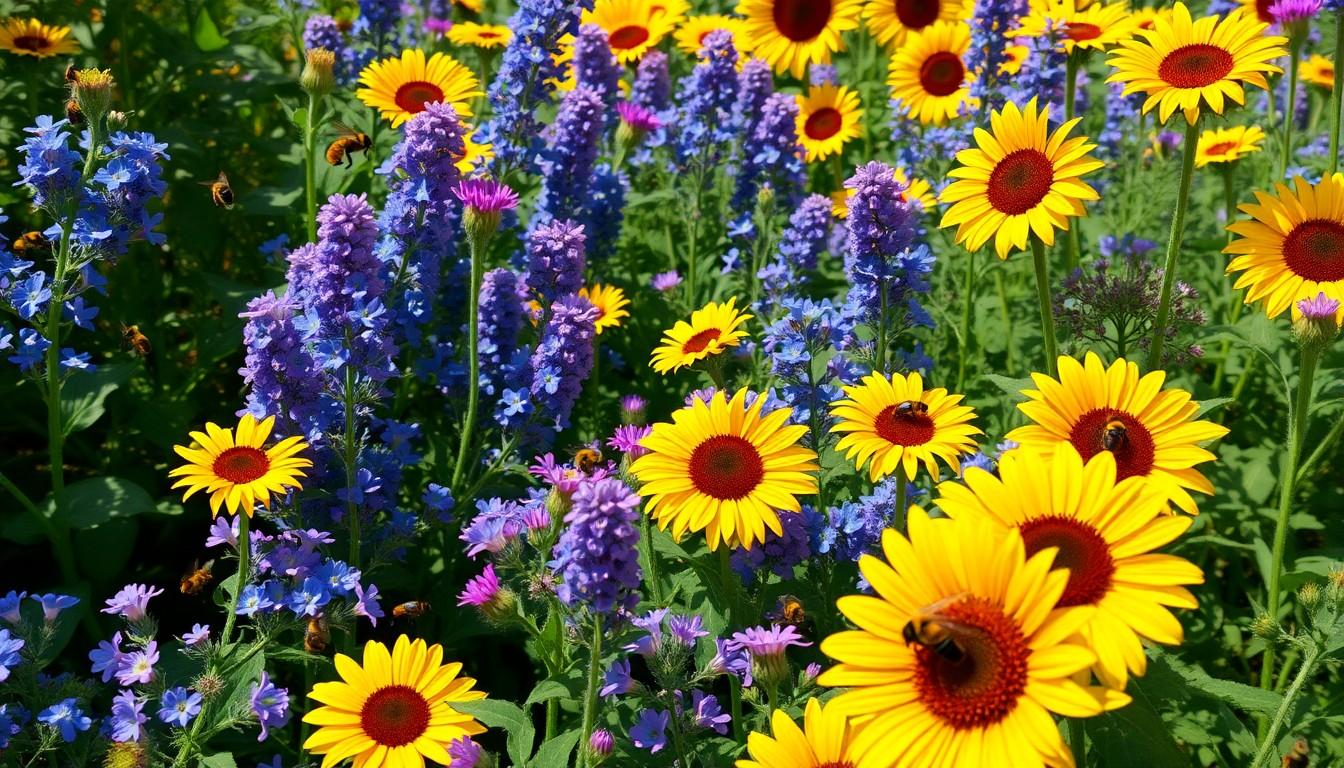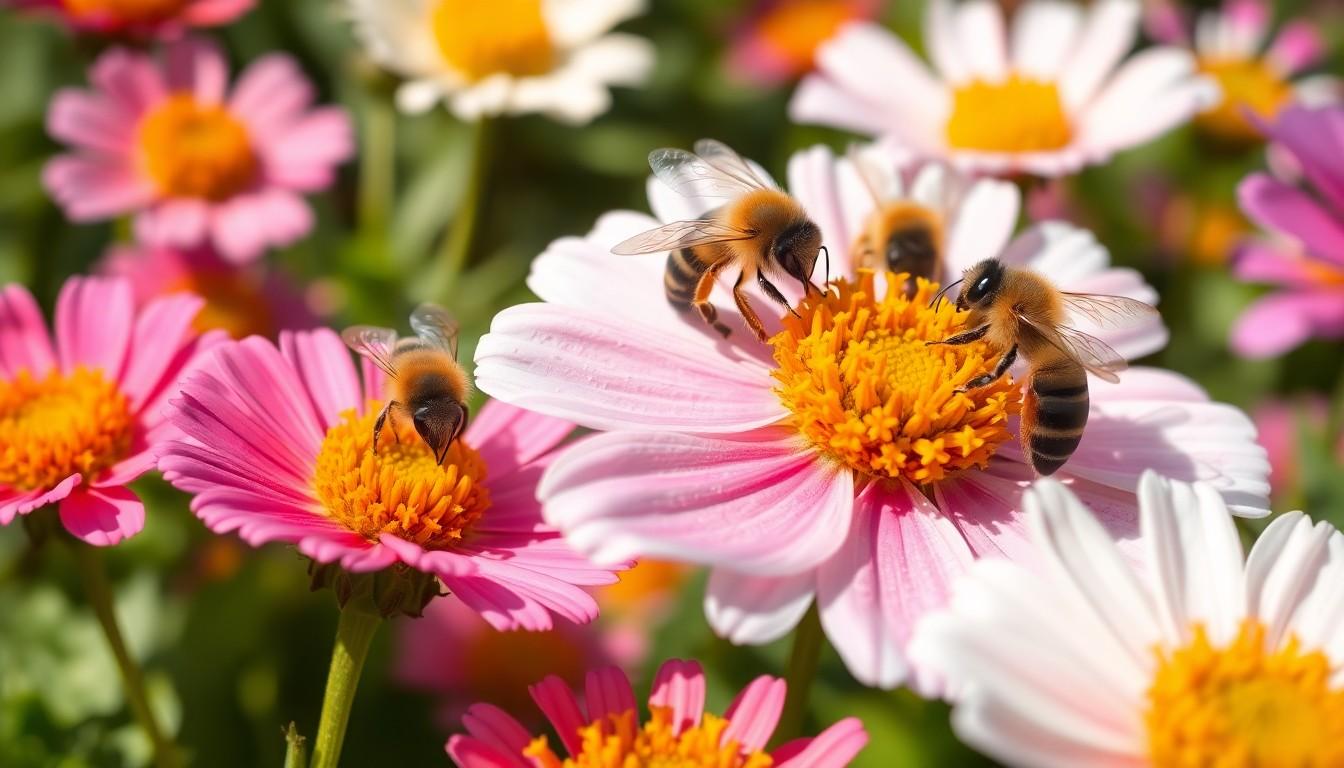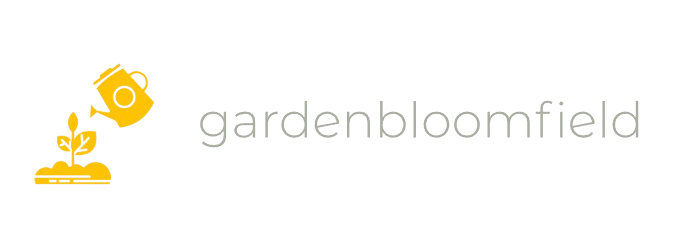The Best Fluffy Pancakes recipe you will fall in love with. Full of tips and tricks to help you make the best pancakes.

Bees’ Favorite Flowers: Discover the Top Picks That Attract These Essential Pollinators
When it comes to flowers, bees have their favorites, and let’s face it—they’re not shy about it. Imagine a buzzing bee, decked out in its tiny tuxedo, flitting from bloom to bloom like a connoisseur at a garden gala. These little pollinators know what they want, and it’s not just any old flower. They’re on the hunt for the sweetest nectar and the fluffiest pollen, making their choices both strategic and deliciously delightful.
Overview of Bees and Their Flower Preferences
Bees display remarkable preferences when selecting flowers. They favor blossoms that provide high nectar and abundant pollen, essential for their survival and hive productivity. Sunflowers, lavender, and clover rank among their top choices, attracting bees with vibrant colors and enticing scents.
Nectar serves as the primary carbohydrate source for bees, fueling their energy during foraging. Pollen supplies proteins necessary for brood development and hive maintenance. Bees identify flowers based on specific traits, including shape, color, and fragrance.
Certain flower species, like foxglove and aster, have evolved to cater to bee needs. These species often feature tubular shapes that accommodate bees’ long proboscises. Many wildflowers, such as dandelions and wildflowers in general, bloom early in the season, providing essential resources when food sources are scarce.
Bees exhibit a tendency to prefer blue and purple flowers, which are easier to see against green foliage. This visual preference enables efficient foraging, allowing bees to locate food quickly. Furthermore, clustering flowers in groups proves advantageous, as bees can gather nectar from multiple blooms in one visit.
Flowering plants that bloom in succession expand foraging opportunities throughout the seasons. Diverse plantings encourage healthy bee populations and extended foraging periods. Additionally, native plants often provide the most beneficial resources, ensuring natural foraging pathways for bees.
Given the importance of flower preferences, gardeners can help by incorporating a variety of bee-friendly plants. Choices made today impact the health and sustainability of bee populations, fostering an environment rich in floral diversity.
Importance of Pollination

Pollination plays a critical role in maintaining healthy ecosystems and productive landscapes. Bees contribute significantly to this process as they transfer pollen between flowers, which leads to seed and fruit production.
Role of Bees in Ecosystems
Ecosystems thrive due to the diverse interactions among species. Bees inspire plant reproduction by facilitating cross-pollination, which enhances genetic diversity. Genetic diversity promotes resilience against pests and diseases, fostering a balanced ecosystem. Various species depend on flowering plants for food, including birds and small mammals, creating a web of life where bees serve as key players. Research indicates that a decline in bee populations directly affects plant communities and the wildlife that rely on them, demonstrating the essential link between bees and ecological health.
Impact on Agriculture
Agriculture benefits immensely from bee pollination. Approximately 75% of global crops depend on animal pollination, predominantly by bees. These pollinators enhance yields and fruit quality, leading to increased food production essential for global populations. Specific crops like apples, almonds, and blueberries require bee activity for successful reproduction, highlighting their importance in farming practices. Furthermore, farmers can improve crop diversity and sustainability by fostering environments that attract and support bees, ensuring a vibrant agricultural landscape.
Common Bees Favorite Flowers
Bees are drawn to various types of flowers that provide essential resources. These favorites help maintain bee health and support ecosystems.
Wildflowers
Wildflowers play a vital role in attracting bees. Species like black-eyed Susans and bee balm offer ample nectar and pollen. Bees frequent these blossoms for their vibrant colors and physical accessibility. Habitat loss decreases wildflower abundance, making their preservation crucial for maintaining bee populations. Efforts to plant native wildflowers can significantly enhance local foraging opportunities for bees.
Garden Flowers
Garden flowers also attract bees and support their foraging needs. Plants like lavender, sunflowers, and zinnias provide abundant resources. Brightly colored blooms capture bees’ attention effectively. Additionally, selecting flowers that bloom in different seasons ensures a steady supply of food throughout the year. Managed gardens featuring diverse flowering plants foster healthy bee communities.
Trees and Shrubs
Trees and shrubs contribute to bees’ nutritional needs as well. Willows, hollies, and fruit trees offer valuable nectar sources during blooming periods. These larger plants create habitats that benefit various bee species. Planting a mix of trees and shrubs increases forage opportunities and sustains bee populations year-round. Incorporating these into landscapes promotes ecological balance and supports biodiversity.
Factors Influencing Flower Preference
Bees favor specific features when choosing flowers. Color and fragrance significantly influence their decisions.
Color and Fragrance
Bright colors capture bees’ attention, especially hues like blue and purple. These colors stand out against green foliage, making flowers more visible. Fragrance adds another layer, guiding bees toward nectar-rich blooms. Many flowers emit scents that signal available resources. For example, lavender releases a strong aroma that attracts bees from significant distances. In addition, flowers like bee balm and salvia provide both appealing colors and strong fragrances. Vibrant blooms with enticing scents enhance the likelihood of bee visits, optimizing their foraging efficiency.
Nectar Availability
Nectar availability plays a crucial role in flower selection for bees. They prioritize blooms that offer high nectar concentrations, vital for energy and hive productivity. Flowers rich in nectar stimulate repeated visits. Many of their favorites include sunflowers, clover, and hollyhock, which consistently provide ample nectar. The presence of nectar guides bees to specific locations, ensuring they find the sweetest sources. Additionally, nectar quality matters, as it varies among plants. Bee efficiency improves when foraging on flowers with substantial nectar, supporting their overall health and hive viability.
Seasonal Variation
Seasonal variation impacts the flowers that attract bees throughout the year. Different plants bloom at varying times, providing nectar and pollen sources in specific seasons. Early bloomers, like crocuses, capture bees when other sources are scarce. Gradual changes in flower availability sustain bee activity across spring, summer, and fall. Species such as goldenrod and asters flourish in late summer, offering vital resources during a critical period. A diverse range of plants ensures continuous foraging opportunities. By planting flowers with staggered bloom times, gardeners create a continuous food supply, benefiting bees all year.
Enhancing Your Garden for Bees
Creating a bee-friendly garden promotes healthy populations and vibrant ecosystems. Selecting the right flowers, applying effective planting techniques, and maintaining the garden properly fosters an inviting environment for bees.
Selecting the Right Flowers
Choose a variety of bee-attracting flowers to maximize foraging opportunities. Sunflowers, lavender, and bee balm provide ample nectar and pollen. Include spring bloomers like crocuses and summer favorites such as asters. Focus on native flowers, as they often require less care and adapt well to local conditions. Position blue and purple flowers prominently, as these hues attract bees effectively. Clumping flower varieties together enhances visibility and simplifies nectar gathering.
Planting Techniques
Implement efficient planting techniques to create a flourishing garden. Space flowers adequately to ensure good airflow and reduce disease risk. Incorporate plants with staggered bloom times to maintain a continuous food source throughout the seasons. Consider using companion planting, as certain combinations can improve flower health and attract more bees. Planting in groups facilitates easier foraging; bees can visit multiple blossoms quickly. Prioritize organic practices by avoiding chemical pesticides, as these can deter bees.
Maintenance Tips
Regular maintenance ensures the garden remains a bee-friendly haven. Water flower beds consistently to promote healthy growth and flowering. Remove dead blossoms periodically to encourage further blooming. Monitor for pests and diseases, addressing issues promptly to protect plant health. Encourage diverse plantings to attract various bee species. Compost plant material to enrich the soil, supporting robust plant growth. Stay informed about local bee populations and adjust planting choices as needed to support their needs effectively.
Conclusion
Understanding bees’ flower preferences is vital for fostering healthy ecosystems and productive gardens. By selecting a variety of bee-friendly plants gardeners can create habitats that support these essential pollinators throughout the year.
Incorporating vibrant blooms with high nectar and pollen content not only attracts bees but also enhances the overall health of local flora. As bee populations face numerous challenges, making informed choices about gardening can have lasting impacts on their survival and the environment.
Every flower planted contributes to a more sustainable future for both bees and the ecosystems they support.
